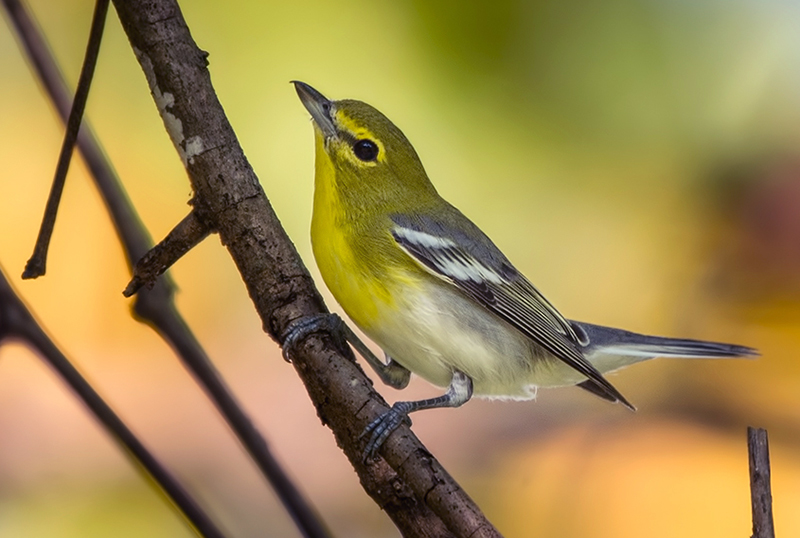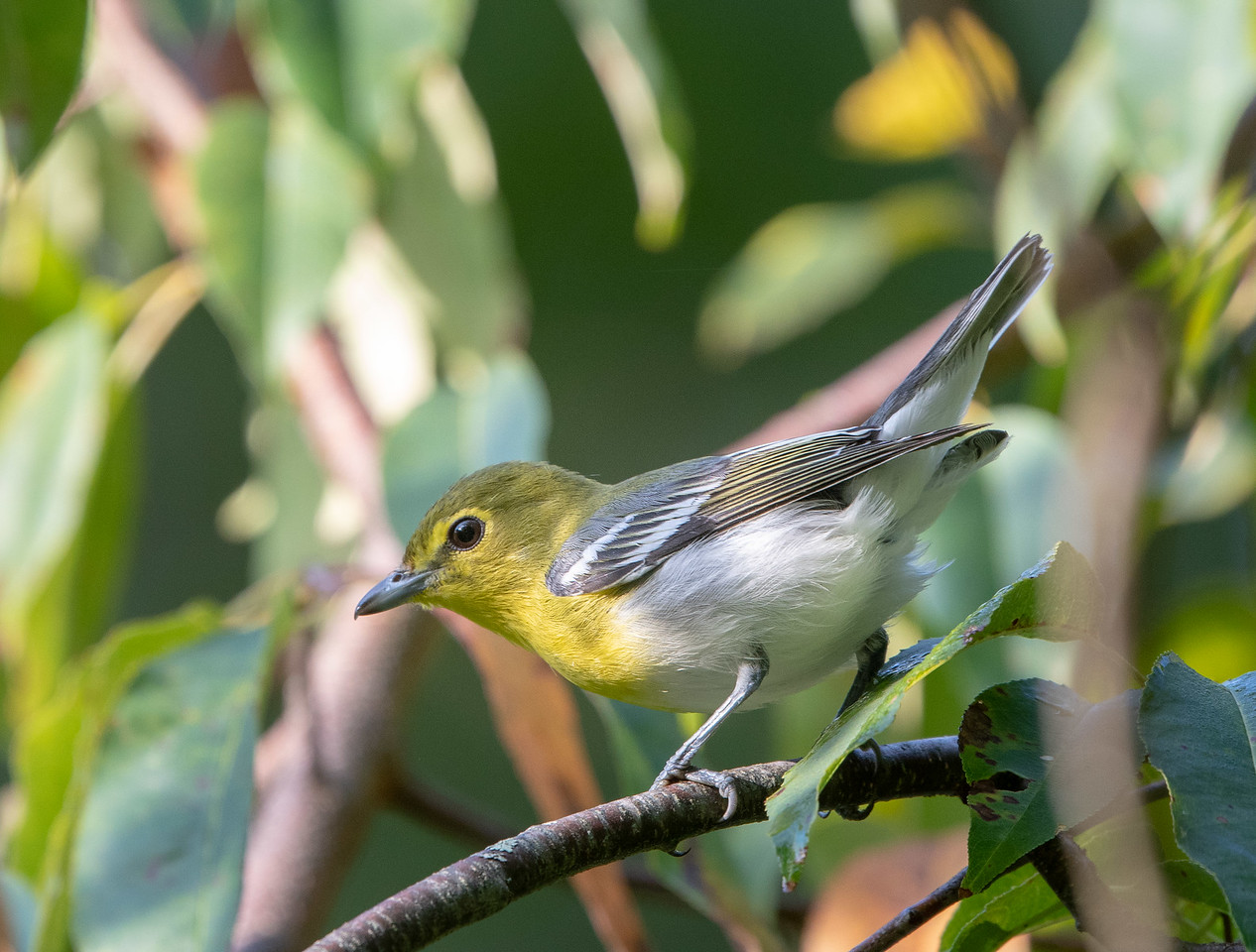| Early Spring Date: | April 25 |
| Late Spring Date: | May 22 |
| Best Dates to See in Spring: | May 1-10 |
Spring: Yellow-throated Vireos nest in the Washington metro area, but they are very uncommon at Monticello Park. On average, only a couple show up at the park each spring, but in some years, none have been recorded. The most likely time to encounter one is during the first week in May.
Fall: An average of only one Yellow-throated Vireo is seen at Monticello each fall.
Where to See Them in the Park
Yellow-throated Vireos generally forage from the mid-story to the canopy.
Physical Description


The Yellow-throated Vireo looks like a stocky Blue-headed Vireo whose front half has been dipped into a yellow rinse. The head is olive, and the throat and breast are yellow. The yellow spectacles are prominent. The wings are gray with two white wingbars. Yellow-throated Vireos have a thick vireo bill, and their plumage is similar to a male Pine Warbler's. The sexes are similar, and adult plumage in the spring and fall looks similar.
Vocalizations
The Yellow-throated Vireo has a slow, sing-song vocalization that sounds like three-a, three-a.... It is somewhat burry, and the pauses between the phrases are longer than in similar songs of other vireo species.
Hear the vocalizations of the Yellow-throated Vireo.Notes
During the first half of the 20th century, the population of Yellow-throated Vireos declined in some areas. At the time, many trees in the United States were being sprayed for Dutch Elm Disease. In the years after the spraying stopped, the vireos made a better recovery than the elms did.
Origin of Names
Common Name: Yellow-throated from the plumage. Vireo is Latin for green.
Genus Name: Vireo means green.
Species Name: Flavifrons means yellow front.
Yellow-throated Vireo video footage
Return to the Index
